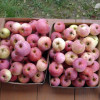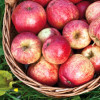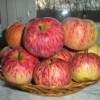Apple-tree "Sun": description of the variety, advantages and disadvantages
Content
Description
An apple tree of the Solnyshko variety will not grow very high, on average, the trees reach a height of no more than 4 meters. Each tree forms a predominantly rounded crown of medium density. The trunk of the tree is covered with dark brown, glossy bark. The tree forms thick, arched shoots.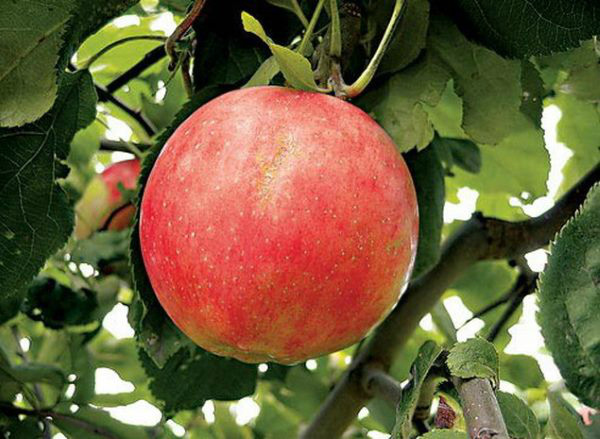
During the flowering period, the apple tree becomes covered with a pale pink color, while the buds are collected in small inflorescences - about 5 pieces each. When it comes time to harvest, you will have medium sized apples - about 200g each. This size is also due to the fact that the winter hardiness of the variety is quite high. Fruits are oblong in shape, with a bright yellow skin. However, the true color of Solnyshko apples is rarely seen by anyone, since the entire fruit is covered with a bright crimson blush. At the same time, apples of this variety are characterized by a large number of subcutaneous points located evenly throughout the fruit.
The Sun apple tree produces fruits with dense white flesh, sometimes with a slight creamy shade, with incredible juiciness and a pronounced sweet and sour taste. Largely due to the fact that the winter hardiness of this variety is really high, the composition of the fruits is rich in various microelements:
- sugars each contains at least 8%;
- ascorbic acid - about 7.2 mg;
- titrated acids - about 1%;
- more than 100mg of P-active compounds.
The ripening period of the Solnyshko variety falls on the end of September, but the fruits reach consumer ripeness only by October (in fact, these are all the shortcomings that this apple tree can boast of). But on the other hand, you can easily preserve the presentation and taste of the fruits, until January.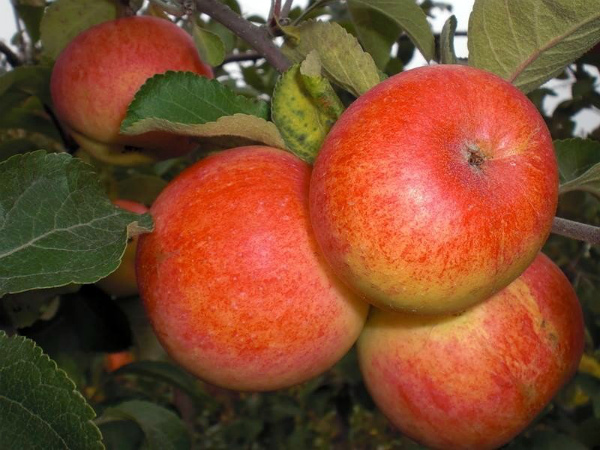
In addition, the Solnyshko apple tree gives consistently high yields, on average, up to 100 centners of fruit can be harvested from adult trees per hectare of plantings.
The description of the variety would be incomplete, without mentioning that the Sun is distinguished by high winter hardiness, such an apple tree is able to withstand temperature drops down to -40 degrees.
Video "Description"
From the video you will learn about the features of the Sunny apple variety.
Pros and cons
In addition to the fact that the Solnyshko variety is characterized by a consistently high yield, it is also resistant to scab (and this quality is especially important if you prefer to grow fruits for the purpose of selling them). And such an apple tree is just a delight for the eye - a real Russian beauty!
Another plus is the incredible winter hardiness of trees: the tree will not suffer, even if the frost drops to around 40 degrees. In addition, this apple tree is not afraid of drafts, respectively, you may not choose too carefully the place for planting it.
The fruits are characterized by high keeping quality and versatility: they can be eaten fresh, juiced from them, used in home preservation, or even used to make cider.Moreover, they lie for a long time, without losing their presentation, perfectly tolerate long-term transportation over long distances.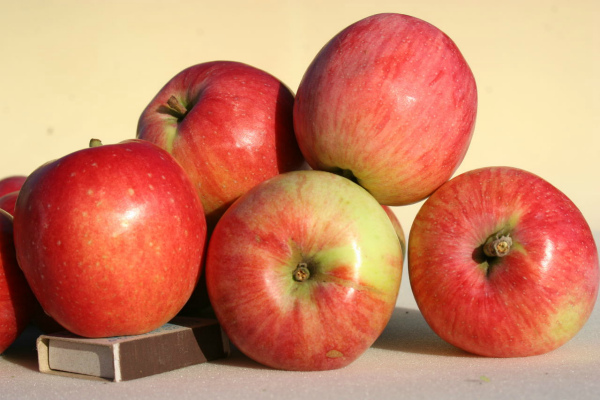
The conditional disadvantages of the variety include the fact that the apple tree begins to bear fruit late - not earlier than the 7th year after planting. And yet, as already noted, the fruits ripen quite late, which is largely due to such a factor as the winter hardiness of the variety.
Sometimes gardeners notice the falling of fruits long before they ripen. This may be due not to the peculiarities of the species, but to non-observance of the rules of agricultural technology and care. Be that as it may, the scope of such apples is limited to eating them fresh or making juice - they are unlikely to be stored for a long time.
Growing
Despite the unpretentiousness and winter hardiness of the variety, it also requires compliance with certain rules for tree care, otherwise a bountiful harvest cannot be expected. Such trees prefer any soil, except clay or heavy. It is very important, when planting a tree, not to deepen the root collar into the ground, so you will give the plant the opportunity to actively develop.
It is best to choose springtime for planting seedlings - in early May. Try to choose a warm, light area without drafts (although the winter hardiness of the variety is high, young trees need gentle conditions). If the soil in your garden is still clay, add a small amount of sand to it - this will improve the circulation of air and water and facilitate their access to the roots of the tree. There is also a feature of the formation of a hole for such an apple tree, it must be at least half a meter in depth, while its width, like for all other varieties, will be regulated by the size of the root system of the seedling.
When fertilizing during planting, try to make a layer of ordinary soil so that organic matter does not touch the young roots, this will protect the tree from burns and injuries. When the well is half full, you can pour in 0.5 buckets of clean warm water and continue instillation. After planting the tree, water the apple tree again, but this time with three buckets.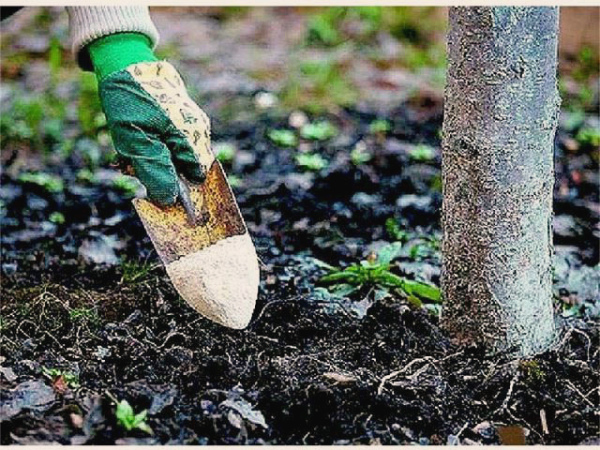
Before planting a tree, be sure to shorten its branches. You need to cut them exactly one third of the length. And in the following, each year of cultivation, do not forget to form the crown - this procedure effectively stimulates fruiting.
Care
Although the winter hardiness of apple trees largely determines their unpretentiousness, there are still several rules that will allow you to achieve maximum results:
- this variety does not welcome stagnant water or excessive waterlogging of the soil. Therefore, try to regulate watering, carry it out often enough, but in moderation. An exception is a particularly hot, dry summer, then the frequency of watering should be increased. If the summer, on the contrary, turned out to be rainy, form a small groove near the seedling for the outflow of excess water - this will protect the roots from decay;
- apple trees are very sensitive to the condition of the soil - the land around a young seedling requires constant care: it needs to be loosened, weeds removed. At the same time, loosening is useful, regardless of the weather conditions: in the heat it will improve the access of air to the roots, in the rain it will ensure the ingress of moisture;
- regular feeding should not be neglected - do it every spring. And if in the first year after planting the fertilizing is limited to that which was introduced at the time of planting, each subsequent year you can apply nitrogenous, phosphorus, potash fertilizers or use ordinary organic matter;

- Like any tree, the apple tree requires regular pruning. This procedure not only has a good effect on the shape of the crown, but also effectively stimulates fruiting;
- The winter hardiness of the variety also affects the flowering period - even the flowers are not afraid of a short return of cold weather.
Harvesting
You need to pick apples in the fall, when they are fully ripe.This happens in September-October, when all the fruits are covered with a blush and have acquired other signs of ripeness. When picking apples, do it carefully so as not to provoke the falling of neighboring fruits, because this will affect their shelf life. You can leave the plucked fruits to lie down for a short time, so that they can "reach" the desired state, gain the necessary juiciness and brown.
Storage
Of course, it is important to harvest correctly. But it is equally important to know how to organize its storage so that the winter hardiness and high yield of the variety is fully justified. Small wooden boxes with ventilation holes are ideal for long-term storage of apples.
Each fruit must be shifted with an insulating layer, paper or sawdust, and the container with apples should be placed in a cellar or pantry, where the air temperature will be constant, no increase in humidity is expected.
Video "Growing"
From the video you will learn how to grow an apple tree to get a good harvest.

